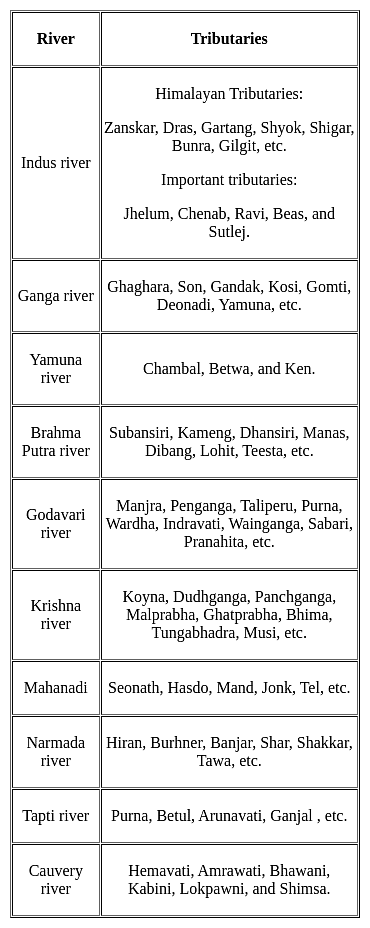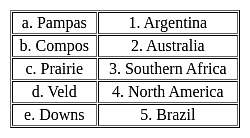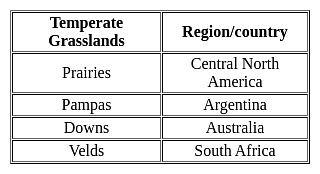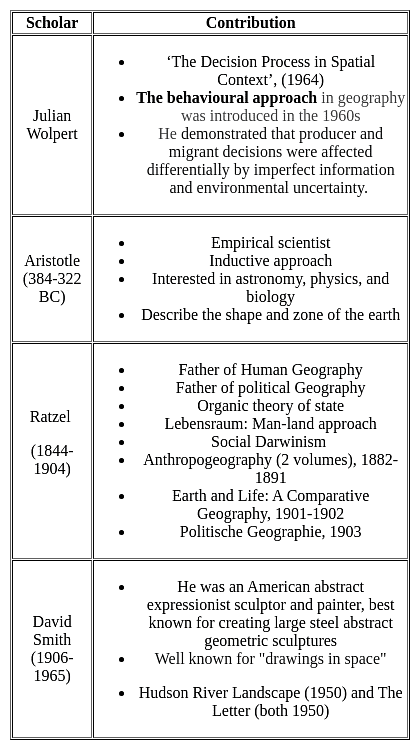TS SET Paper 2 Mock Test - 7 (Geography) - TS TET MCQ
30 Questions MCQ Test TS SET Mock Test Series 2024 - TS SET Paper 2 Mock Test - 7 (Geography)
The Koyna, Tungabhadra and Bhima rivers are the major tributaries of the river ___________.
Which one of the following is not a result of erosion by running water?
According to Wegener, which of the following arrangements fall under the southern part of Pangaea?
Which metal is the most abundant in the earth crust?
(a) Raw materials are available at one fixed point.
(b) There is perfect competitive pricing
(c) The demand for the product is not constant.
(d) Transport rated may vary according to climatic and socio-economic conditions.
With reference to Land breeze, Consider the following:
1. It occurs during the night.
2. The air flows from the high pressure over the sea to the low pressure over the land.
3. Land breezes are more prevalent during the winter seasons.
Which of the statements given above is/are correct?
Which of the following statement is correct related to the rocks?
1. Rocks formed out of solidification of magma and lava and are known as igneous rocks.
2. Acidic rocks does not constitute the sial portion of the crust.
Assertion (A)- The forest resources are unevenly distributed in India.
Reason(R)- Forest cover must be kept in check regularly.
Choose the correct option:
…………….. clouds are associated with rainfall, thunder and lightning
Statements (A) and (B) are the main features of which of the following continents?
(A) The Continent is bound by oceans and seas on all sides.
(B) Tropic of Cancer, The Equator and Tropic of Capricorn pass through this continent.
In the history of India population, which duration period is referred to as 'A great leap forward'?
Consider the following statements
- Active remote sensing uses the sun as a source of electromagnetic energy.
- Passive remote sensing is significantly affected by adverse weather conditions.
- Active remote sensing can collect data at day and night hence having more working timeframe.
- Active remote sensing requires less amount of energy to generate adequate electromagnetic radiation for illumination.
Choose the incorrect statements.
Consider the following statements:
A. Relict Mountain are formed by differential erosion because of differing solubility and erodibility of rocks in the region.
B. Converging boundary volcanism produces island arch like the Japanese arc
C. Alps, Andes, Appalachian and Ural are the examples of Block mountains.
D. GK Gilbert gave the Thermal Contraction Theory in 1890.
Which of the following are Incorrect?
a) Close to the equator, tropical cyclones do not occur because of excessive humidity.
b) The largest number of temperate cyclones originate mostly over the North Atlantic Ocean.
c) The central low-pressure core of a tropical cyclone is called depression.
d) The Polar frontal theory or the wave theory provides an adequate explanation of the origin of extra tropical cyclones.
Which of the following statements are correct?
A rise in sea level near shore due to strong winds is called
Which one of the following pairs is NOT matched correctly?
It is essential to pay more regard to which of the following two things while classifying maps into different categories?
|
60 tests
|























